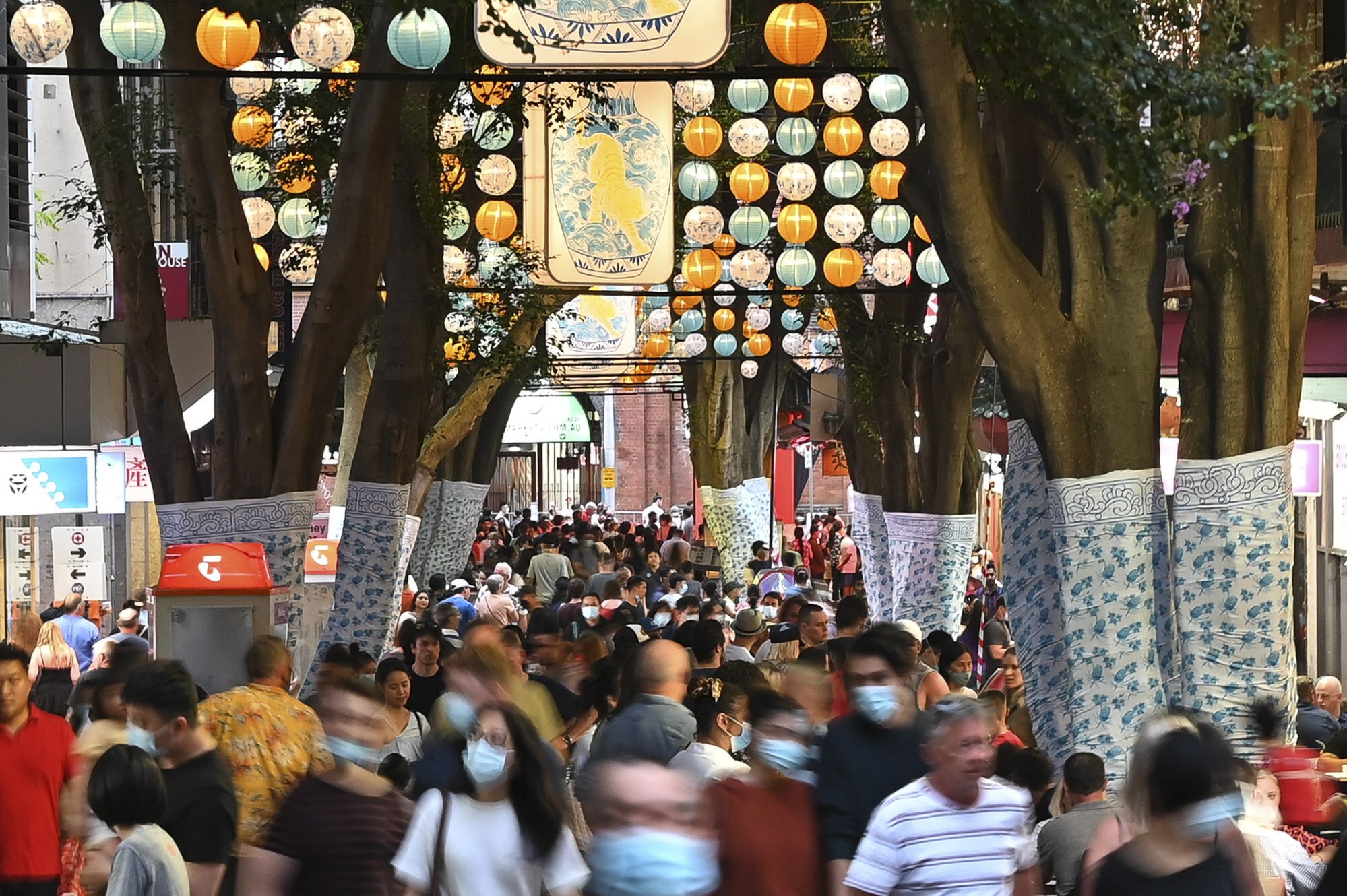
How colours in Chinese culture can still strike a nerve despite evolving traditions
- Sydney’s Chinatown community criticised the blue and white decorations used by the city for Lunar New Year, which are associated with death and mourning
- Other ‘mourning colours’ in Chinese history include various shades of beige, dark blue or black, depending on the region or linguistic group
In January, the local city council decorated Sydney’s Chinatown with white and blue lanterns, and wrapped trees with white cloth, as part of its Lunar New Year celebrations. The local Chinese-Australian community did not take too kindly to the decorations. As many Chinese associate the colours white and blue with death and mourning, what should have been festive became funereal.
I mentioned recently in this column about constant negotiations around traditions. It is the same with colours that are deemed taboo for important occasions. For instance, why is it that nobody today would reprimand a Chinese bride for wearing white from head to toe? Isn’t white the colour of mourning? What a terrible and unlucky colour for the biggest and happiest day of one’s life! Should blue-and-white chinaware be used on happy occasions such as weddings and birthdays?
Coloured clothing was not readily available to ordinary people in ancient China because it was difficult to produce dyes and the dyeing process was expensive. Therefore, only members of the elite, such as royalty, aristocrats, nobles, officials and their families could afford clothes in coloured fabrics. Commoners wore undyed clothing which, depending on the material, could be brown, beige or white.
It was not until the middle imperial period from the Tang to Song dynasties (618-1279), during which China saw great leaps in economic and technological developments, that dyeing technology and dyed fabrics became much more accessible.

From then on, those who did not belong to the elite classes began to wear coloured clothing in addition to their plain, undyed ones, though there were sumptuary laws that prohibited them from wearing certain colours (for example, the imperial yellow reserved for members of the imperial family).
Colours represented, and still represent, vibrance and cheer, and for this reason the absence of colour in the accoutrements and the clothing that mourners wear was characteristic of Chinese funerals (indeed of funerals in most cultures and ethnicities). It is a visible sign to the immediate community and the world at large that the bereaved family are so deep in mourning that they eschew all worldly pleasures, represented by bright colours, at least until the period of mourning is over.
How Prince Andrew’s loss of titles would have been shameful in imperial China
Besides white, other mourning colours (if one could call them that) were various shades of beige, dark blue or black, depending on the region or linguistic group within the huge nation that is China.
When I was a child, people who had a death in the family wore a small square of fabric in one of the mourning colours on their sleeve, fastened by a safety pin. This custom must have fallen out of use because I have not seen it done for many years.
Which brings us back once again to the issue of the transmutability of traditions and customs. From their relevance to their extant forms, from forbidden colours to actions that are not, context is everything.
White, blue and other colours may no longer be the sole preserve of mourning and funerals, but when used in an installation for Chinese New Year, when the desire for good luck and auspiciousness is at its most desperate, then it comes as no surprise that people are going to feel a certain way.










